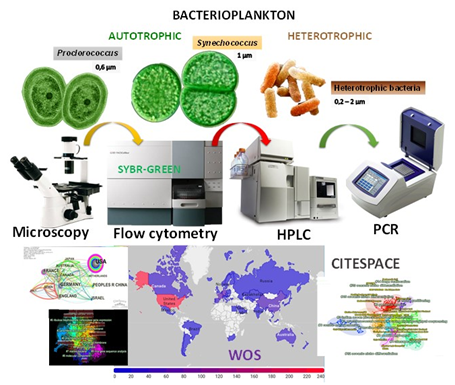Prochlorococcus and Synechococcus marine cyanobacteria: a scientometrics review
DOI: https://doi.org/10.3856/vol51-issue4-fulltext-2949
Abstract
Prochlorococcus and Synechococcus are the dominant primary producers in the ocean and account for a significant percentage of oceanic carbon fixation. This review summarizes the available data in the literature (1992-2021; n = 480) using CiteSpace software to provide insights into the specific characteristics of Prochlorococcus and Synechococcus genes that scientists can use for establishing future research directions. From 1992 to 2021, the most frequent and with higher centrality keyword was "multiple evolutionary origin" (0.43), followed by flow cytometry (0.40), because this period was the main method used to identify cyanobacteria. In 2001-2010, were "sequence" and "gene", both with 0.13 of centrality; this can be explained by the period when gene sequencing was developed. In the last 10 years period 2011-2021, were diversity (0.17); marine Synechococcus (0.10); Prochlorococcus ecotype (0.08); gene expression (0.14). Additionally, the migration characteristics of flow cytometry, genes identification methods, genomes, and ecotypes of cyanobacteria, indicate how future studies should focus in 1) molecular ecology: how genetic variability among different populations affects their adaptation to different ocean environments, 2) physiology: how this phytoplankton respond to changes in nutrient availability and solar radiation, 3) interactions with other living beings: how they interact with other organisms, such as bacteria, zooplankton, and fish, and how these interactions affect the dynamics of the ocean ecosystem, and 4) modeling: computational models are being developed to predict how the distribution will change in the future as a result of climate change and human use of the oceans.




